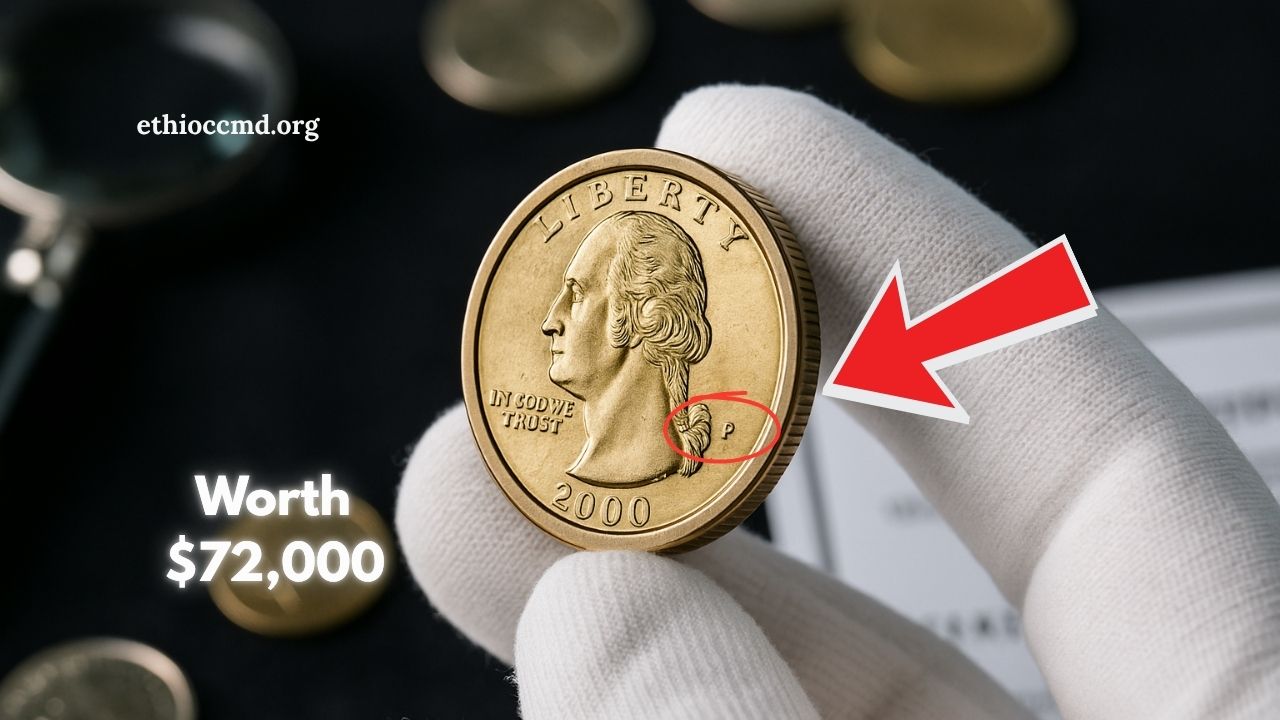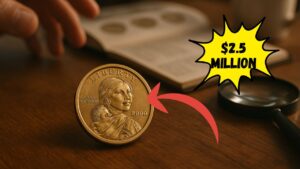Imagine that your 2000‑P Sacagawea dollar, which looks ordinary, could actually be worth tens of thousands—even up to $72,000—because it’s a rare mule error coin.
That’s exactly what happened recently when one of these mismatched dies was authenticated and valued at around $72,000. Here’s how to check if you might be holding a modern numismatic legend.
What Is a Mule Error?
A mule coin is produced when the obverse die from one coin design is paired with the reverse die of a different design—an impossible combination under normal mint operations.
For the 2000‑P Sacagawea dollar mule, the heads (obverse) is from a Washington quarter, while the tails (reverse) shows the Sacagawea eagle design—struck on a golden dollar planchet.
This error happened accidentally at the Philadelphia Mint, and only about 19 to 24 examples are known to exist. One recent discovery exploded collector interest, with the authenticated specimen appraised at $70,000–$72,000.
Why Is It So Valuable?
Modern minting practices are highly precise, so genuine errors like this are extremely rare. A few key reasons for its value:
- Extremely limited known examples (fewer than two dozen)
- Major U.S. Mint error involving two separate coin designs
- High demand among elite collectors of mint error coins
- Proven sales: one example sold for nearly $194,000 (graded MS‑66) in early 2024
That makes it one of the most sought-after modern U.S. errors.
Identifying Features: What to Look For
| Feature | How It Should Appear on the Mule Coin |
|---|---|
| Obverse (Heads) | Portrait of George Washington (state quarter style), with mint mark “P” |
| Reverse (Tails) | Soaring eagle design from Sacagawea dollar |
| Planchet Color & Edge | Gold-colored with smooth edge, unlike quarter’s reeded edge |
| Year & Mint Mark | “2000” date and “P” mint mark for Philadelphia |
| Rarity Clues | Only 19–24 authenticated coins exist; often graded MS‑65 or higher |
How Rare Are These Coins?
- Only about 19 confirmed examples discovered since May 2000
- Three known die pairs have produced these errors
- Notable collector Tommy Bolack owns around 16 examples
- Auction records show values ranging from $120,000 to $194,000 for high‑grade pieces
- One recent find was authenticated at around $72,000, spurring renewed interest
How to Check Your Coin
- Examine the obverse carefully: If you see George Washington instead of Sacagawea, that’s the first giveaway.
- Look at the reverse: Does it display the golden eagle typical of Sacagawea dollars?
- Check the edge: A smooth edge indicates a dollar planchet, not a quarter.
- Check the mint mark and date: 2000‑P is essential for authenticity.
- Assess condition: Higher grades like MS‑65 to MS‑66 drive top dollar.
- Seek professional grading: Certification by PCGS or NGC is crucial to validate value.
Risks and Considerations
- Counterfeits or altered coins do exist—professional grading is essential.
- Many circulated coins show wear or damage that reduces value.
- Not every coin with unusual mismatches is a genuine mule—consult a numismatic expert.
The 2000‑P Sacagawea dollar mule error is a legendary modern U.S. coin—one of the rarest and most valuable errors ever discovered.
With fewer than two dozen examples known and recent authenticated sales topping $70,000 to over $190,000, these coins are extremely rare and highly collectible.
If you have a Sacagawea dollar with Washington’s face on one side and a golden eagle on the other, it’s more than a curiosity—it could be a priceless piece of numismatic history. Be sure to get any suspicious coins professionally graded.
Check your change, and check it twice—you might be holding one of the rarest treasures in U.S. minting history.
FAQs
Can a regular collector-grade Sacagawea dollar really be worth $72,000?
Yes—if it’s the rare mule error with the Washington quarter obverse and Sacagawea dollar reverse, authenticated and in superb condition.
How many mule error coins exist?
Approximately 19 to 24 known examples, with three distinct die pairings identified. One collector owns most of them.
What should I do if I find a coin that looks like this?
Have it evaluated by a professional coin grading service. Certified errors in high grade can command six-figure values at auction.



